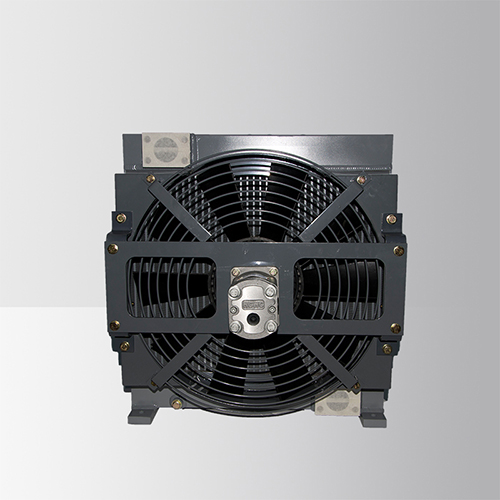Xu Shuang
Ankerui Electric Co., Ltd., Shanghai Jiading 201801
I. Introduction
In recent years, with the continuous improvement of domestic power supply quality requirements, at the same time, the power supply department has increased the use of reactive power compensation devices in order to increase the efficiency of existing power transmission and transformation equipment, save energy, and increase economic efficiency. Static reactive power compensation devices emerge one after another. As the traditional pillar industry of China’s national economy and the important civil production industry, the textile industry is also an industry with obvious international competitive advantages. It plays an important role in prospering markets, expanding exports, absorbing employment, increasing farmers’ income, and promoting regional economic development. .
II: Reference Case
In the textile industry, a large number of electric motors are used. In the generation of a rotating magnetic field, the electric motor needs to draw reactive power from the electric grid, so the power factor is low, which increases the losses of the line and the power grid. The rotor and stator currents of the motor will increase, and the rotor and stator losses of the motor will increase significantly. The heating of the motor will intensify and cause overheating. In severe cases, the motor will be burned.
Textile industry motors are widely used in textile mills. The motor power is generally 220 volts and 0.55 KW. The reactive power needs compensation 30-40 KVAR. The harm of inductive energy generated by the motor to the power system not only aggravates energy consumption, reduces the efficiency of the use of electrical equipment, shortens the electrical service life of the electrical equipment, but also has a great impact on the quality of the electrical grid.
Acrel provides an ARC power factor controller to a textile industry to solve the reactive power compensation problem.
Third, the choice of ARC power factor controller
Ankerui's ARC power factor controller strictly complies with the requirements specified in professional standards such as DL/T597 "Low-Voltage Reactive Power Compensation Controller Ordering Specifications" and JB/T9663 "Low-Voltage Reactive Power Automatic Compensation Controller" and other professional standards. According to the specific compensation requirements and load characteristics of the textile industry. In general, the controller can be selected from the following aspects:
Table 1 Product Application
model
Load requirements
Compensation method
Switch
Capacitor
Compensation plan
ARC-6/J
ARC-8/J
ARC-10/J
ARC-12/J
Three-phase balanced load; and the reactive power is relatively stable, and users who do not need frequent switching of capacitance compensation are required.
Single-load (high-power motor) on-site compensation and low-voltage switchgear centralized compensation
Contactor
Self-healing power capacitor
Three-phase total compensation
ARC-6/R
ARC-8/R
ARC-10/R
ARC-12/R
Three-phase balanced load, or variable load, impact load.
Single-load (high-power motor) on-site compensation and low-voltage switchgear centralized compensation
Capacitive non-contact switching switch
Self-healing power capacitor
Three-phase total compensation
ARC-12F-J
ARC-16F-J
Three-phase balanced load; and the reactive power is relatively stable, and users who do not need frequent switching of capacitance compensation are required.
Single-load (high-power motor) on-site compensation and low-voltage switchgear centralized compensation
Contactor
Self-healing capacitor
Three-phase total compensation, sub-supplement
ARC-12F-R
ARC-16F-R
Three-phase balanced load, or three-phase unbalanced load, variable load, impact load.
Single-load (high-power motor) on-site compensation and low-voltage switchgear centralized compensation
Capacitive non-contact switching switch
Self-healing power capacitor
Three-phase total compensation, sub-supplement
Note: Impact Loads: Welders, Cranes, High Power Motors, Rolling Mills, etc.
Table 2 Product Selection
Product number
Function selection table
Static output
Dynamic output
Overvoltage
Undervoltage
Overcurrent
Under current
Temperature protection
Phase protection
Harmonic protection
communication
Encoding
ARC-6/J
√
√
√
√
√
√
ARC-6/R
√
ARC-8/J
√
√
√
√
√
√
ARC-8/R
√
ARC-10/J
√
√
√
√
√
√
ARC-10R
√
ARC-12/J
√
√
√
√
√
√
ARC-12/R
√
ARC-12F-J
√
√
√
√
√
can
selected
√
√
Optional
√
ARC-12F-R
√
ARC-16F-J
√
√
√
√
√
can
selected
√
√
Optional
√
ARC-16F-R
√
Fourth, the effectiveness of reactive power compensation
In modern textile enterprises, a large number of inductive devices of different sizes are connected to the power system, so that in addition to the active power, the grid power needs reactive power. If the natural average power factor is between 0.70 and 0.85. The reactive power consumed by the enterprise's power grid accounts for about 60% to 90% of the active power consumed. If the power factor is increased to about 0.95, the reactive power only occupies about 30% of the power consumption. One is to save electricity expenses; the other is to increase the utilization rate of the equipment; thirdly, to reduce the energy consumption of the system; and fourth, to improve the voltage quality.
references:
[1] Ankerui Electric Co., Ltd. Product Selection Guide 2013.1.
About the Author:
Xu Shuang, female, undergraduate, Ankerui Electric Co., Ltd., the main research direction is reactive power compensation and active filter device design; Email: Mobile QQ
Product Parameters
Hydraulic Motor Fan Bar Plate(plate-fin) Heat Exchanger Series
Features:
Aluminum bar plate fin structure, coupled with high-performance hydraulic motor and high-strength fan leaves, can be in a complex working conditions for a long time to work.
Application:
Hydraulic system return line, lubrication system, variable pump drain line cooling.
Construction machinery (cranes, pumps, rotary drilling rig), ship metallurgical and mining machinery and other hydraulic circuit cooling.
Technical Parameters:
The displacement of the motor in the table is for reference only and can be adjusted according to the actual working conditions and requirements.Motor in and out of the oil is bidirectional, the standard configuration for the suction type.
The maximum pressure of the outlet port: 120bar The maximum pressure of the drain: 2bar
The noise value is a value at a distance of 1 m.

Hydraulic Motor Fan Heat Exchanger
Hydraulic Motor Fan Heat Exchanger,Hydraulic Heat Exchanger,Hydraulic Cooling System,Hydraulic Aluminum Fan Heat Exchanger
Xinxiang Zhenhua Radiator Co., Ltd. , http://www.thermictransfer.com